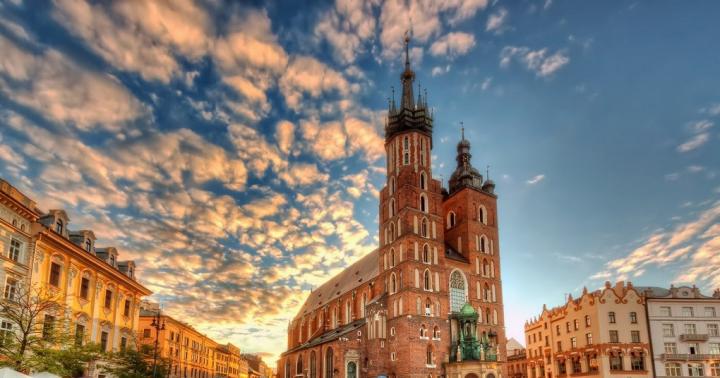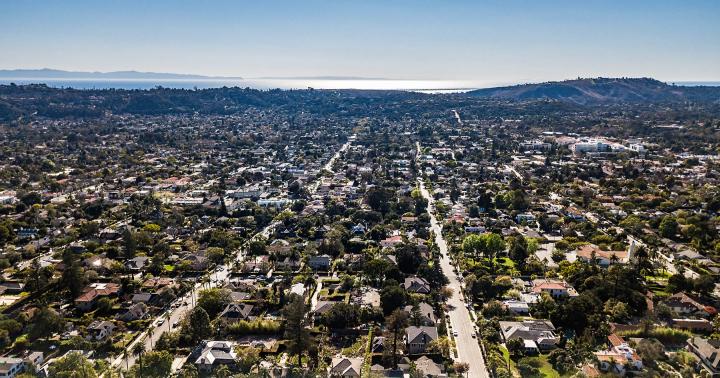The park was formed in 1985 to preserve the standard natural complexes of the Republic of Mari El. Translated from the Mari language, “Mari Chodra” means “Mari forest”. The entire territory of the park is covered with beautiful pine forests and coniferous-deciduous forests. The decoration of the park is clean and beautiful karst lakes, many of which are declared natural monuments. The attractiveness of the park is the abundance of mineral springs. The largest of them is the Green Spring, the water of which is used in treatment.
Relief
The territory of the park is formed by the southern spurs of the Mari-Vyatsky Uval. The southwestern part of the park is adjacent to the river. Volga. Most of the territory belongs to the Iletsky upland-plain southern taiga region with the development of modern karst, the smaller part belongs to the Polesie valley-terrace lake region of mixed forests. The park area is a gently undulating plain with island uplands (Kerebelakskaya, Klenovogorskaya), with absolute heights of 75–125 m above sea level. m. The highest absolute elevation of the territory is the peak of Maple Mountain - 196.0 m above sea level. m. The active manifestation of the karst process led to the development of karst landforms - numerous sinkholes, up to 50–60 m in diameter, and sinkhole-type lakes, up to 35–40 m deep.
Hydrology
Lakes. The park contains a significant number of picturesque lakes of karst origin. Most of them are declared natural monuments, Glukhoye, Kichier, Yalchik, Ergezh-Er, Shut-Er, Kuzh-Er, Shungaldan. They are round or oblong in shape, up to 40 m deep, with a silt bottom. The lakes are fed by springs or small rivers and streams. Some of them have underground connections with neighboring rivers.
Lake Glukhoe is located 4 km east of the village. Yalchinsky. The shores of the lake are relatively high, steep, and covered with forest. The area of the lake is 22.0 hectares, maximum depth 23 m, length 2140 m, width 100 m. The water is dark, brownish in color. The bottom of the lake is dense, partly sandy or limestone.
Lake Kichier is located in the Yalchin forestry. The shores are flat, sandy, and slightly swampy in places. The area of the lake is 46.0 hectares, maximum depth 16 m, total length 3 km. Consists of three interconnected swimming pools. The water is dark. The bottom is muddy. The sludge is dark, black, with the smell of hydrogen sulfide.
Lake Yalchik is located in the Yalchinsky forestry. It consists of a central large basin and three adjacent ones, connected to it by narrow and shallow straits. The shores of the lake are mostly sandy and only silty in places. The highest and steepest are the eastern and northern shores. The lake is surrounded on almost all sides by mixed forest with a predominance of pine. The area of the lake is about 150 hectares, the maximum depth is 35 m. The water is clear. The bottom is sandy.
Lake Ergezh-Er (translated from Mari as Round). Located in Kerebelyak forestry. It is part of the system of karst lakes located at the foot of the ledge of the Kerebelyak Upland. The area of the lake is 4.5 hectares, maximum depth 13 m, length 350 m, width 150 m. The water is clear. Bottom sediments are insignificant.
Lake Shut-Er (translated from Mari, Black). Located in Kerebelyak forestry. It is part of a system of karst lakes located at the foot of the ledge of the Kerebelyak Upland along its eastern steep slope. The area of the lake is 28.9 hectares, maximum depth 17.5 m, length 1550 m, width 300 m. The water is dark in color. Bottom sediments are insignificant. The diet is mixed (groundwater, springs, swamps). The banks are high, but not steep.
Lake Kuzh-Er (translated from Mari as Long). Located in Kerebelyak forestry. It is part of a system of karst lakes located at the foot of the ledge of the Kerebelyak Upland along its eastern steep slope. The area of the lake is 25.0 hectares, maximum depth 26.5 m, length 1300 m, width 200 m. Water transparency 4 m. It is fed by groundwater, partly by the springs of the western shore. Bottom sediments are insignificant. The northern and southern shores are swampy. The western bank is high (about 40 m). A channel flows from the northern corner of the lake and flows into the lake. Yergezh Er.
Lake Shungaldan is located 1.5 km from the Green Key mineral spring, on the left bank of the river. Fly. The lake is oval in shape, of sinkhole origin, with marshy shores. The hydrogen sulfide content in water reaches 50–75 mg per 1 liter, which gives the water valuable medicinal properties for external use in the form of baths.
The Green Key mineral spring is located at the foot of Klenovaya Gora, 1.8 km from the mouth of the river. Yushut. The water of the source rises from the bottom of a funnel, the diameter of which is about 2 m, and partially flows out from under the base of Klenovaya Gora, connecting into one stream, up to 6 m wide and 0.7–0.8 m deep. It flows into the river. Fly. Water consumption from 1000 to 1540 l/s. The water temperature is constant throughout the year and is 6.5°C. The chemical composition of the water is calcium sulfate.
Rivers. The main river of the park, Ilet, crosses it from northeast to southwest and flows into the Volga. Its left bank tributaries are the river. Yushut, Arbaika, Uba. The river flows into it on the right. Petyalka. The silt flows through a plain with slightly undulating terrain, covered with mixed forests, its speed is 0.2–0.8 m/s. In winter the river does not freeze. The river bed is winding, composed of limestone and sand, subject to deformation, the banks are flat and swampy in places. The width of the channel reaches 20–40 m.
The floodplain of the Ilet River is two-sided, up to 500 m wide, overgrown with shrubs and mixed forests. In its floodplain and tributaries there are about 200 oxbow lakes, where beavers, minks, muskrats, otters live, waterfowl nest, and fish live. Many of the oxbow lakes are rich in healing mud. During the warm period of the year, the river's water content allows tourist boats to pass through.
Soils
The soil cover is varied due to differences in topography and underlying rocks. The most common soils (81% of the park area) include podzolic and soddy-podzolic soils.
Climate
The climate of the park is moderate continental. It is characterized by relatively hot summers and frosty winters with stable snow cover. The average temperature of the warmest month of July is 18.6°C. The absolute minimum air temperature in winter reaches -52 C. The average duration of the warm period of the year with temperatures above 0°C is about 200 days.
The territory of the park belongs to a zone of unstable moisture: there are years with sufficient, sometimes excessive moisture, but there are also dry years. Precipitation falls unevenly throughout the year: the greatest amount is observed in summer, the least in winter. An average of about 500 mm of precipitation falls annually. The highest monthly precipitation is observed in July – 60–70 mm. The invasion of cold air masses from the polar basin with northern, northwestern and northeastern winds causes a sharp drop in temperature in winter, and frosts in spring and autumn. Continental air masses from the southeast often invade the park territory. In spring or summer they cause dry conditions, in winter – clear, frosty weather.
On its territory there are five settlements inhabited by fifteen thousand people. Mari Chodra includes forest lands, hayfields, pastures and arable lands. The Yoshkar-Ola-Moscow railway and the Yoshkar-Ola-Kazan highway run along it. It is interesting because the southern border of coniferous-deciduous forests of the subtaiga zone passes here. European taiga species are combined with elements of forest-steppes and steppes.
Enough diverse flora and fauna of Mari Chodra. The flora of the national park includes about fifty rare plant species. About one hundred species of birds, fifty species of mammals and 29 species of fish live here. The most numerous group of rodents is represented. Squirrels and chipmunks are jumping, wood mice and bank voles are running. There are also predators: polecat, weasel, ermine. Sometimes a lynx comes in. Moose are common, wild boars are less common. There are a lot of bats in the park grounds. Specially protected animals of Mari Chodra include the otter and beaver, brought here from the Voronezh Nature Reserve back in 1947.
Mari Chodra means Mari Forest. And it's not just the name. This forest is simply one of the best in Russia. Moreover, it is interspersed with a large number of beautiful lakes. Among them are Yalchik, Glukhoye, Kichner, Shulgandon, which are natural monuments. The main river is Ilet. The climate here is temperate continental with very hot summers and frosty snowy winters. All this makes Mari Chodra environmentally friendly and the most picturesque monument of Mari nature. The most interesting objects for excursions: the old Kazan Highway and Pugachev’s Oak, near which he allegedly stood, watching the burning of Kazan during the years of his uprising.
The park's workers carry out serious research work, in which they are assisted by enthusiasts from numerous environmental camps operating in the park. There are a lot of vacationers here. The greatest attention is paid to Lake Yalchik, where there are eleven institutions for recreation and treatment. The northeastern zone of the park is a specially protected protected area. The Mari forest is often called the Mari taiga and this is justified. Making their way through a dense impenetrable forest, travelers are stupefied with delight when they come across a shallow, clear river with homemade bridges, under which half-meter or even meter-long pikes are waiting for something right in the water. Just a natural idyll. By the way, in one of the local lakes, a muskrat that had been missing was recently discovered again.
The highest point in the park is Maple Mountain, which rises 196 meters. The Staritsa of the Ilet River and lakes contain large reserves of mineral mud. There are a large number of not only historical monuments, but also thirty archaeological ones. Among them is the Oshutyalskoye settlement, consisting of fourteen dwellings of the Prikazan culture. In the village of Ilet there is a museum of the Mari Chodra Park. On its territory there are about twenty springs, including the Green Spring, which flows right at the foot of the mountain on the left bank of the Ilet River.
Mari Chodra is a national treasure of the republic. The value of this park is not only in the richness of flora and fauna, the presence of historical monuments, but also in the fact that it is an excellent health resort for recreation and treatment. There is always a huge number of organized vacationers and so-called savages here. People love to sit by the fire, go fishing, and pick berries and mushrooms, for which the park is so famous. Here is a place where people suddenly feel that there are no more problems in their lives.
Mari Chodra National Park (photo)
 |
 |
|
Mari Chodra National Park (address, administration phone numbers) – on the map
Mari Chodra National ParkEstablished in 1985, the Mari Chodra National Park is an interesting natural-territorial complex.
Translated from the Mari language, “Mari Chodra” means “Mari forest”.
Purpose of creation
Protection of rare and endangered species of flora (115 rare and endangered species of flora are registered in the park), fauna and historical and archaeological monuments.
The entire territory of the park is covered with beautiful pine forests and coniferous-deciduous forests.
Numerous mineral springs, significant outlets of which are located in the valleys of the Ilet and Yushut rivers, are used for medicinal purposes in sanatoriums, rest homes and hospitals. A characteristic element of the landscape are lakes (sinkholes, inter-dunes, floodplains). Provalnye are located mainly on the southern, southwestern slopes of the Mari-Vyatsky ridge. Most of them are located in the lower reaches of the Ilet River - Lake. Yalchik, Glukhoye, Kichner, Shulgandan are natural monuments. The “Green Key” mineral spring and botanical geocenoses - the “Klenovaya Gora” tract, “Klenovogorskaya oak grove” - also belong to natural monuments. The historical and cultural complex of the park includes 2 historical monuments - an oak tree called Pugachevsky (according to legend, E. I. Pugachev stayed overnight with his detachment under the shade of this oak tree) and the old Kazan road. The oak differs sharply in its size among the forest stand. This is a gigantic tree with a powerful trunk, the diameter of which is 159 cm, which is part of the upper tier.
There are 14 tourist routes (on foot, on water, on horseback). The most popular places for recreation and tourism are Maple Mountain, lakes Yalchik, Glukhoe, Kichier.
Currently, there are 14 recreational facilities on the territory of the national park: tourist centers, recreation centers, tourist towns, student sports camps, and sanatoriums. An environmental camp was organized at the Mari State University camp.
Address: 425040, Rep. Mari El, Zvenigovsky district, Krasnogorsky village, st. Central, 73








At the junction of three zones - forest-steppe, mixed and coniferous forests - there is a national park Mari Chodra. Its name itself translates as “Mari forest”.
Pearls of Mari Chodra
The main treasure of the complex are the most beautiful lakes, many of which are declared natural monuments: Morskoy Glaz, Yalchik, Glukhoye, Shungaldan. Not only residents of Mari-El come to admire them, but also guests from more remote regions.
Sea Eye, the most famous of all bodies of water, is so named because of the amazing turquoise hue of the water. From the high bank there is a view of a huge bowl filled with clear cold water, to which a narrow path descends. Tall spruce trees grow around, and the aroma of pine needles flows in the air.
Resembling a crescent shape, Deaf Lake is very popular among divers. Having reached a depth where the light of the sun almost does not penetrate, you can see “growing” pines that fell there many centuries ago.
Yalchik captivates at first sight with its grandeur and beauty. Underwater sources are constantly expanding the area of the reservoir.
Shungaldan Lake stands a little apart. It seems that the forest surrounding it seems to come straight out of the water. Shungaldan is located near Maple Mountain.
The lakes are of karst origin, which explains the bizarre shapes.
The magical land of Klenovogorye
Maple Mountain is the highest point of the Mari Chodra Park. From its top there is a beautiful view of the surrounding forests. The wonderful land, Klenovogorye, is located in the center of the complex. The ecological route passing through the mountain amazes with the beauty of the surrounding landscape.
Pugachevsky oak
A little less than a thousand species of plants grow on the territory of the national complex, but its most famous inhabitant remains the huge oak tree. Proudly rising at the top of the mountain, the stocky, tall hero, according to legend, protected Emelyan Pugachev himself from the sun. To this day, the tree is a decoration of the park.
Horseshoe Trail
Along the route you can see rare plants listed in the Red Book. Ferns, which grow only in the park, will be a real find for naturalists. The Horseshoe educational trail will lead you through the most interesting corners of Mari Chodra.
Many birds and mammals live here all year round. Moose often visit here, and lynx are a frequent visitor. There are also taiga species such as brown bear and ermine in Mari Chodra. However, the most numerous inhabitants remain representatives of the rodent order. Otters and muskrats live in the rivers. The park is home to more than 150 species of birds. Among them are wood grouse, hazel grouse, and birds of prey: tawny owl, white owl, osprey, buzzard, and white-tailed eagle. Numerous families of waterfowl have become long-time residents of the complex.
Ilet River
Glorified in songs, Mari tales and legends, the beautiful river proudly carries its clean, cold waters. On the territory of the park, Ilet is the largest. Thanks to the underground springs that feed it, the largest of which is the Green Key, the river does not freeze even in severe frosts. The water of the springs is considered healing. The shores of Ileti either rise up with steep slopes, or descend down into wonderful beaches with clean sand. There are almost no settlements, but many paths and paths approach the river. A kayaking trip will be an unforgettable experience for park guests.
The purest water, the aromas of blooming lilies of the valley, fresh air - all this allows you to forget about the bustle and monotony of the city. That is why residents of the republic call the complex Mari Chodra most favorite vacation spot.


